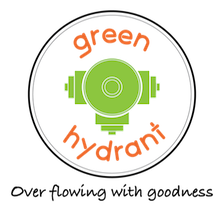
"Eating a rainbow" is a simple yet effective guideline for a balanced diet. It involves including fruits and vegetables of different colors in your meals, each color representing unique nutrients and health benefits. Think of it as nature’s palette for optimal nutrition: red tomatoes, orange carrots, yellow peppers, green spinach, blue blueberries, and purple eggplants.
Each color corresponds to specific phytonutrients – natural compounds in plants that support our health. By eating a variety of these, you ensure your body gets a wide range of vitamins, minerals, and antioxidants it needs to function at its best.
Benefits of Eating a Rainbow
-
Protects Against Diseases
- Red and pink foods, like tomatoes and red peppers, are rich in lycopene, a carotenoid that protects the body against oxidative damage and may help prevent certain types of cancer.
- Examples: Tomato, pink guava, apricot, watermelon, pink grapefruit, red peppers, pomegranate, strawberries, cranberries.
-
Improves Heart Health
- Purple and blue foods, like blackberries and beetroot, contain anthocyanins, which support cardiovascular health by reducing inflammation, improving blood circulation, and preventing blood clots.
- Examples: Beetroot, blueberries, blackberries, elderberries, mulberries, currants, Concord grapes, cherries, raspberries, plums, eggplant, purple cabbage, purple cauliflower, purple corn.
-
Enhances Eye Health
- Orange and yellow foods, like carrots and sweet potatoes, are packed with beta-carotene, which the body converts to vitamin A. This nutrient promotes good vision, a strong immune system, and healthy skin.
- Examples: Carrots, sweet potatoes, yellow peppers, oranges, bananas, pineapples, mango, pumpkin, apricots, butternut squash, cantaloupe, peaches, corn
-
Detoxifies the Body
- Green vegetables, like kale and spinach, are abundant in chlorophyll and other compounds that help detoxify the liver and maintain overall body health.
- Examples: avocados, asparagus, broccoli, cucumber, kale, Brussels sprouts, spinach, watercress, kailan.
-
Fights Free Radicals
- Brown and white foods, like onions and garlic, contain allicin, which has anti-tumor properties and helps block free radicals–unstable molecules that can damage cells. Other foods in this group contain flavonoids like quercetin and kaempferol, powerful antioxidants with anti-inflammatory and anti-cancer properties.
-
Examples: onions, cauliflower, garlic, leeks, parsnips, daikon radish, mushrooms
Eating a rainbow also supports a diverse microbiome. Brightly colored fruits and vegetables are rich in antioxidants that combat cellular damage caused by free radicals. Additionally, their varied fibers nourish beneficial gut bacteria, leading to improved digestion and a stronger immune system.
Easy Tips to Eat a Rainbow
-
Plan Colorful Meals
- Make a stir-fry with red peppers, orange carrots, green broccoli, and purple cabbage.
- Add a fruit salad with strawberries, mangoes, kiwi, and blueberries to your breakfast.
-
Snack Smart
- Swap chips for sliced cucumbers, bell peppers, or a handful of mixed berries.
-
Incorporate New Ingredients
- Challenge yourself to try a new fruit or vegetable each week. Ever cooked butternut squash or tried a dragon fruit? Now is your chance!
-
Drink It Up
- Make juices or smoothies with multiple colors, like beetroot, carrots, spinach, and mixed berries. Add herbs, ginger, or turmeric for extra vibrance and nutrition.

Final Thoughts
Eating a rainbow is not just about adding color to your plate; it is about adding vitality to your life. This simple practice ensures you’re nourishing your body with a diverse array of nutrients, promoting overall health, and reducing the risk of chronic diseases.
So next time you’re at the grocery store or farmer’s market, let the rainbow guide you. Pick up produce in every hue and let your plate become a work of art – and a gift to your health.

